Don't wanna be here? Send us removal request.
Text
youtube



youtube




NYC’s giant Tulip Day is back on March 30 and you can pick a bouquet for free! 🌷
On Sunday March 30, 170,000 tulips will be taking over Union Square for the second year!
You can sign up to pick your own bouquet of 10 Tulips for free from 11:30am - 4pm* @tulipdaynyc
Free tickets will be available March 17 at tulipday.eu. Will share more reminders closer to the date but want everyone to mark their calendars!
Do you plan to go to Tulip Day this year?


🌷🌹🌷🌷🌹🌷🌷






4 notes
·
View notes
Photo




In 1881, a real estate entrepreneur named James Lafferty built a six-story high wooden elephant on a deserted stretch of barrier island beach just south of Atlantic City, in southern New Jersey. Over the years, Lucy the Elephant had been used as a tavern, hotel, restaurant and even a party venue. By the 1960s, Lucy was a mess and was scheduled for demolition.
By 1970, Lucy was purchased by Edwin T. Carpenter and a group of citizens called the Margate Civic Association had fund raised enough money to move her to a different spot in AC and restore her completely. Surprisingly, Lucy went unharmed during Hurricane Sandy, adding to Lucy’s symbolic status of the strength and spirit of Atlantic City. Lucy has since been designated a National Historic Landmark. I would love to see her become a hotel again someday.
616 notes
·
View notes
Text


A gang of seniors are headed on the way to their corner store, but they're so unbelievably slow that they cause a traffic mayhem.Even the most patient driver in the world can't help but get frustrated at how long it takes them to cross the street!
Old Folks Traffic Jam Prank 😊 Just For Laughs Gags
youtube
3 notes
·
View notes
Text







Vintage Citroen Cars and Velosolex Motorized Bicycles
Yes there’s such thing as the Greater New York Citroen & Velosolex Club, and they’re hosting their 15th Annual Bastille Day Rally and Rendez Vous around New York City on Saturday featuring vintage Citroen cars and Velosolex motorized bicycles from France. The starting point for the Rally will be on 122nd Street and Riverside Drive South (Grant’s Tomb) at 10:00 AM. The vehicles will drive around Manhattan and conclude as part of the French Institute – Alliance Française’s street fair (see below) where the vehicles will be on public display.
More info at: greaternycitroenvelosolexclub.com.

3 notes
·
View notes
Text





Paris 2024 Olympics opening ceremony: start time and everything you need to know
The start of Paris 2024 is set to be epic. Here’s our comprehensive guide to the Olympic opening ceremony
Tuesday 4 June 2024
La Seine Olympique © Paris 2024 - Florian Hulleu
The opening ceremony of the Paris Olympics will plunge the capital into an Olympic frenzy, which will then dominate daily life for over 15 days. The aim is to break conventions and boundaries by organising the largest Olympic ceremony in history, not just confined to a stadium but moving through the city. Creative maverick Thomas Jolly is masterminding the show, and it promises to be a real adventure. Let’s go through it step-by-step.
When is the Paris Olympics opening ceremony?
The opening ceremony takes place on July 26 2024.
What time will it start?
The ceremony kicks off at 8.24pm, which just happens to be 20.24 if you’re using the 24-hour clock. See what they’ve done there?
Where is the ceremony held?
Probably not where you’re expecting. The Paris 2024 opening ceremony will take place outdoors, along the banks of the River Seine and even through its waters. It’s the first time in the history of the Summer Games that an opening ceremony hasn’t been hosted in a stadium, which hugely increases the potential audience capacity.

10 notes
·
View notes
Photo


The Significance of Leonardo da Vinci’s Famous “Vitruvian Man” Drawing
By Kelly Richman-Abdou on August 5, 2018
As a master of the arts, sciences, and everything in between, Leonardo da Vinci is often referred to as a “Renaissance man.” While the polymath is perhaps most well known for his Mona Lisa masterpiece, it is his scientific sketches that impressively illustrate the encyclopedic knowledge and eclectic interests that have come to define him.
The Vitruvian Man, a late 15th-century drawing, is a prime example of such work. Intended to explore the idea of proportion, the piece is part work of art and part mathematical diagram, conveying the Old Master‘s belief that “everything connects to everything else.”
What is the Vitruvian Man?
Leonardo drew the Vitruvian Man, known also as “The proportions of the human body according to Vitruvius,” in 1492. Rendered in pen, ink, and metalpoint on paper, the piece depicts an idealized nude male standing within a square and a circle. Ingeniously, Leonardo chose to depict the man with four legs and four arms, allowing him to strike 16 poses simultaneously.
The Vitruvian Man Today
Since 1822, the Vitruvian Man has been a part of the permanent collection of the Gallerie dell’Accademia in Venice, Italy. As it’s too fragile to be on display, the piece is rarely exhibited. However, even while concealed, the drawing remains a key part of their collection and, ultimately, one of the most important works of the Italian Renaissance.

READ MORE:
https://mymodernmet.com/leonardo-da-vinci-vitruvian-man/
2 notes
·
View notes
Text




The year 2000 as envisioned in the year 1910




1 note
·
View note
Text



In Japan, napping at work won't get you fired. In fact, taking time out for a snooze is seen as honorable and a sign of diligence by employers.
In Vietnam - We would have a 30 min nap after our lunch. Made a world of a difference around productivity & having more energy / patience for when you would return home to your family.
Japanese firms encourage their dozy workers to sleep on the job This article is more than 8 years old Poll finds that Japanese workers sleep for just six hours 22 minutes on work nights – less than those in any other country
Money Talks: Napping at work
Sleeping at work used to be frowned upon - still is in most circumstances - but in Japan some clever bosses are recognising that naps can actually boost productivity. Mayu Yoshida reports.
youtube

2 notes
·
View notes
Text
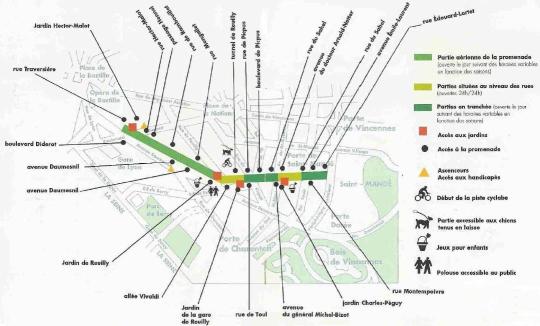

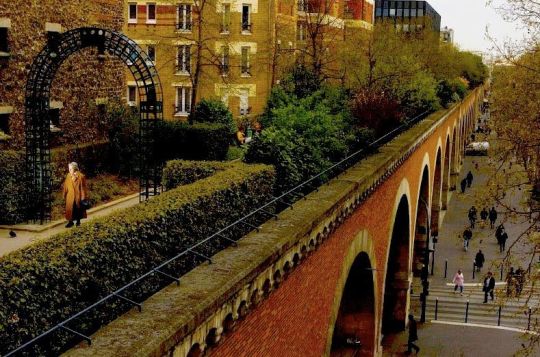

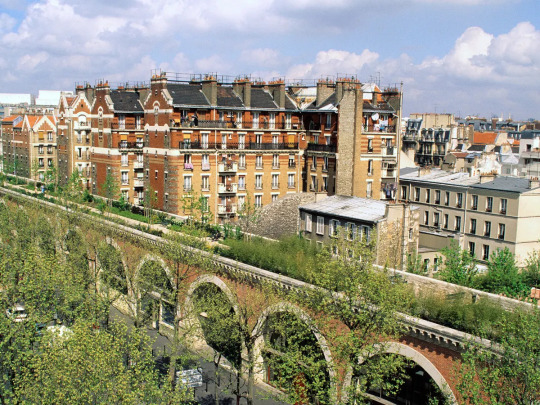


La coulée verte, ou promenade plantée
Promenade plantee map
Map of promenade plantee. Promenade plantee map (Île-de-France - France) to print. Promenade plantee map (Île-de-France - France) to download. The promenade plantee is an original walk, which stretches from the Bastille to the Bois de Vincennes, takes you sometimes in the air and sometimes underground. The promenade plantee unique design will take you from viaduct to footbridge, from tunnel to trench, through the East of Paris. It was created in 1988 by Philippe Mathieux and Jacques Vergely, on the site of the old railway line that linked Place de la Bastille to Varenne-Saint-Maur since 1859. Disused in 1969, it gave way to a succession of gardens scattered over 4.5 kilometers: Hector Malot, Reuilly, Reuilly station, Charles-Peguy as its shown in promenade plantee map. Paris has some of Europe most beautiful parks but for something different search out the Promenade Plantee. The promenade plantee its magical, green stroll 10 metres above the street, which begins at the Bastille and winds through the 12th arrondissement for three miles as its shown in promenade plantee map, coming out before the Bois de Vincennes. When a long-abandoned mid-19th century viaduct was converted into the world first elevated park walkway in 1993, most locals thought it a waste of money. Parisians needed time to take a project like this to heart, but now the Promenade is a cherished landmark.
The promenade plantee crosses the entire length of the 12th arrondissement of Paris (4.5 km as its mentioned in promenade plantee map). The promenade plantee follows the route of an old railway line which ceased to be used in 1969. The terminus station was at the Bastille at the current location of the opera house, the trains went to Boissy-Saint-Léger where there is now the RER A. The promenade plantee starts behind the Bastille Opera House. It overlooks the avenue Daumesnil up to the Reuilly garden: it is the famous Viaduc des Arts. The Vivaldi alley is then the commercial part of the promenade. Then this one continues in tunnels and trenches and one ends up joining the golden door and the wood of Vincennes.
Escape Routes: Discover the Promenade Plantée, the Green Heart of Paris Before New York’s High Line there was Paris’ Promenade Plantée – an elevated walkway fashioned from a disused railway that threads together arts venues, bars and parks in the southeastern part of the city. Culture Trip’s Paris correspondent Eleanor Aldridge explores the route. Running above the mêlée of streets, squares and rail lines that crisscross southeast Paris, the Promenade Plantée is a green needle piercing the city’s heart. Beneath this elevated walkway, motos weave in and out of traffic, crowds gather near Place de la Nation for the latest protest and modern developments butt up against some of the 12th arrondissement’s most community-focused neighbourhoods. Ten metres above, a secret world awaits. Construction of the Promenade Plantée, officially known as the Coulée Verte René-Dumont, finished in 1993 – that’s 21 years before the arguably better-known High Line in New York. It runs for nearly five kilometres between Bastille and Vincennes, along a disused rail line that was once plied by chuntering steam trains.
The paved path cuts through parks and old tunnels, while arched green trellises are festooned with roses and framed by cherry blossom in spring. In winter the path becomes starkly beautiful, set against the imperious Haussmannian façades that run alongside it. It’s not only a great walking route – offering peeks into apartments along the way – but the Promenade Plantée also acts as a ready-made itinerary for exploring this corner of the city. Steps make it easy to nip down to street level, or it takes about an hour to walk to the wilds of the Bois de Vincennes.
Viaduc des Arts
The 19th-century railway arches running along Avenue Daumesnil were among the first stretches beneath the Promenade Plantée to be developed. Now known as the Viaduc des Arts, they house bars, studios, restaurants and gallery spaces. Confiture Parisienne is a must-visit: pick up a jar of award-winning jam – perhaps carrot, passionfruit and vanilla – or try a preserve-making class at the weekend. At airy bar-restaurant Gamelle, there’s also bowling, darts and table football, while the food spans hot dogs, tapas and French classics.
Ground Control
Founded six years ago, Ground Control has become the city’s hub for street food, pop-ups, events with a social conscience and anything in between. Sprawling across what was once an enormous SNCF train shed, it encompasses an open-plan food court, several bars, a shop and open spaces used for everything from yoga to painting classes. The buzzy terrace is the place in Paris to find a great spritz and an even better burger, cooked in a refurbished bus.
Bois de Vincennes
The Promenade Plantée ends at the city’s eastern green lung, the Bois de Vincennes – the mirror image of the Bois de Boulogne, west of the city centre. Making up for the lack of parks in central Paris, its 2,459 acres span lakes and woodland interlaced with shady pathways. Once a royal hunting ground, it’s the closest you can get to real countryside these days without leaving the city proper. In summer, festivals and concerts keep things lively well into the evening.
This story appears in Issue 6 of Culture Trip magazine: The Sustainability Issue.
3 notes
·
View notes
Text



Parisian Parks Are a Pleasure Ground of Evolving Ideas About Human Nature
Chloe-Rose Crabtree History Editor 18 April 2019
View
From rigid geometry through Romantic idealism to guerrilla gardening and rooftop farming, the design of Paris’s green spaces over the centuries tells the story of a city – and a society – getting to grips with humanity’s place in the natural world.
Without parks, cities would be a monotony of brick and mortar. Not only do green spaces provide an aesthetic respite for residents, they function as the city’s lungs, purifying polluted air. In Paris, parks are also central to the city’s way of life; however, they haven’t always been open to the public, nor as lush as modern environmentalists would prefer. Indeed, the evolution of garden design in the capital reflects shifting ideas about the relationship between humans and the natural world.
In the 16th century, the study of mathematics and science led to increased interest in the rational order of the world. European thinkers such as Francis Bacon began to posit that a civilisation’s complexity could be measured by how effectively it could manipulate nature for human needs.

https://theculturetrip.com/europe/france/paris/articles/the-enlightenment-of-parisian-parks/
https://theculturetrip.com/europe/france/paris/articles/the-enlightenment-of-parisian-parks/
2 notes
·
View notes
Text



Coulée verte René-Dumont La coulée verte René-Dumont, anciennement Promenade plantée, est une voie verte et un parc linéaire du 12e arrondissement de Paris en France.
Situation et accès Située sur le tracé d'une ancienne voie ferroviaire, cette voie verte s'étend de la place de la Bastille au boulevard périphérique, porte de Montempoivre.
La partie occidentale de la promenade située sur le viaduc des Arts est accessible par des escaliers et des ascenseurs à divers endroits de l'avenue Daumesnil ; elle est réservée aux piétons. La partie orientale, en contrebas des rues, est aménagée pour permettre la circulation séparée des piétons et des cyclistes.
Les stations de métro les plus proches de cet espace vert sont Bastille (lignes 1, 5 et 8), Gare de Lyon (lignes 1 et 14), Montgallet (ligne 8), Daumesnil (lignes 6 et 8) et Bel-Air (ligne 6).
L'ancienne ligne de Vincennes (à gauche) au niveau de l'avenue Daumesnil lors des inondations de 1910
🥖 🇫🇷 🥐
0 notes
Text







Las Vegas "MSG Sphere": The World's Largest Spherical Building
youtube
Forget everything you thought you knew about live entertainment. Las Vegas, the city that never sleeps, has once again raised the bar with a mind-blowing $2.3 billion masterpiece that's rewriting the rules of live entertainment. Rising majestically above the bustling streets, even outshining the iconic Lady Liberty herself, this colossal 18,000-seat arena is not your typical concert hall. It's a true marvel that's set to redefine the very essence of live performances. Buckle up, because we're about to take you on a journey into the future, where technology and imagination collide to create an experience like no other.
1 note
·
View note
Text



Why the Las Vegas Sphere will take over the World 👇 👀 👇
youtube



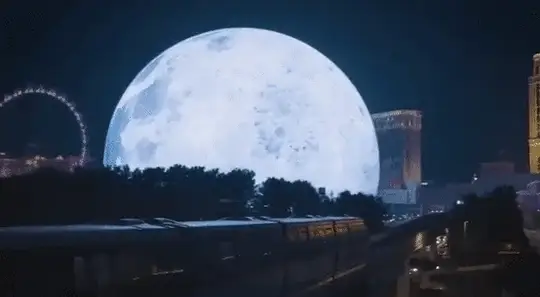
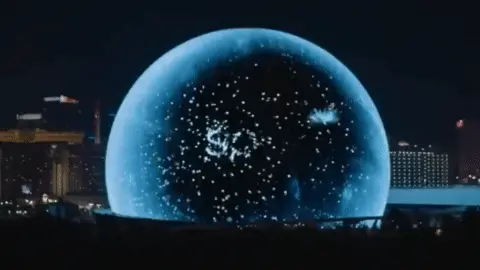
0 notes




















